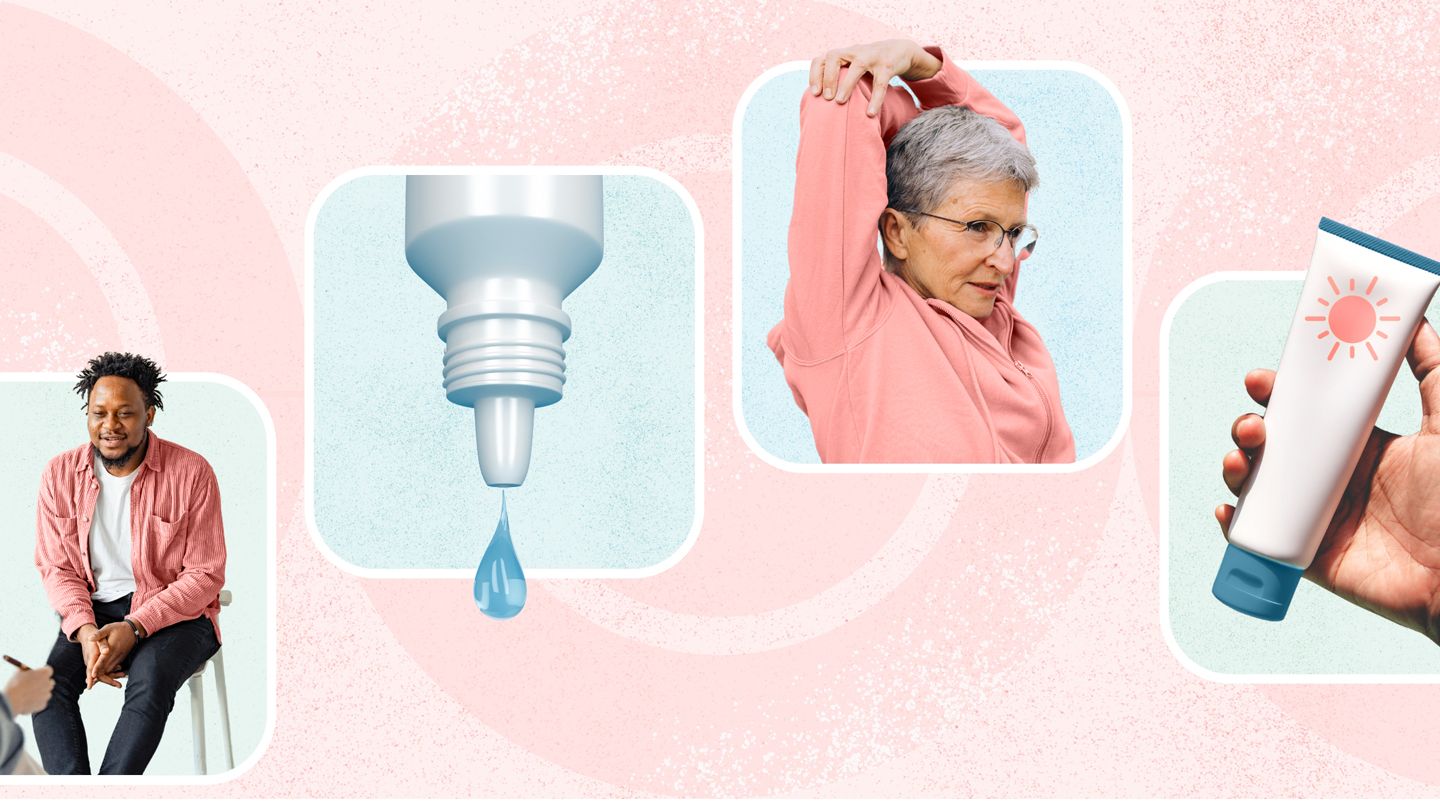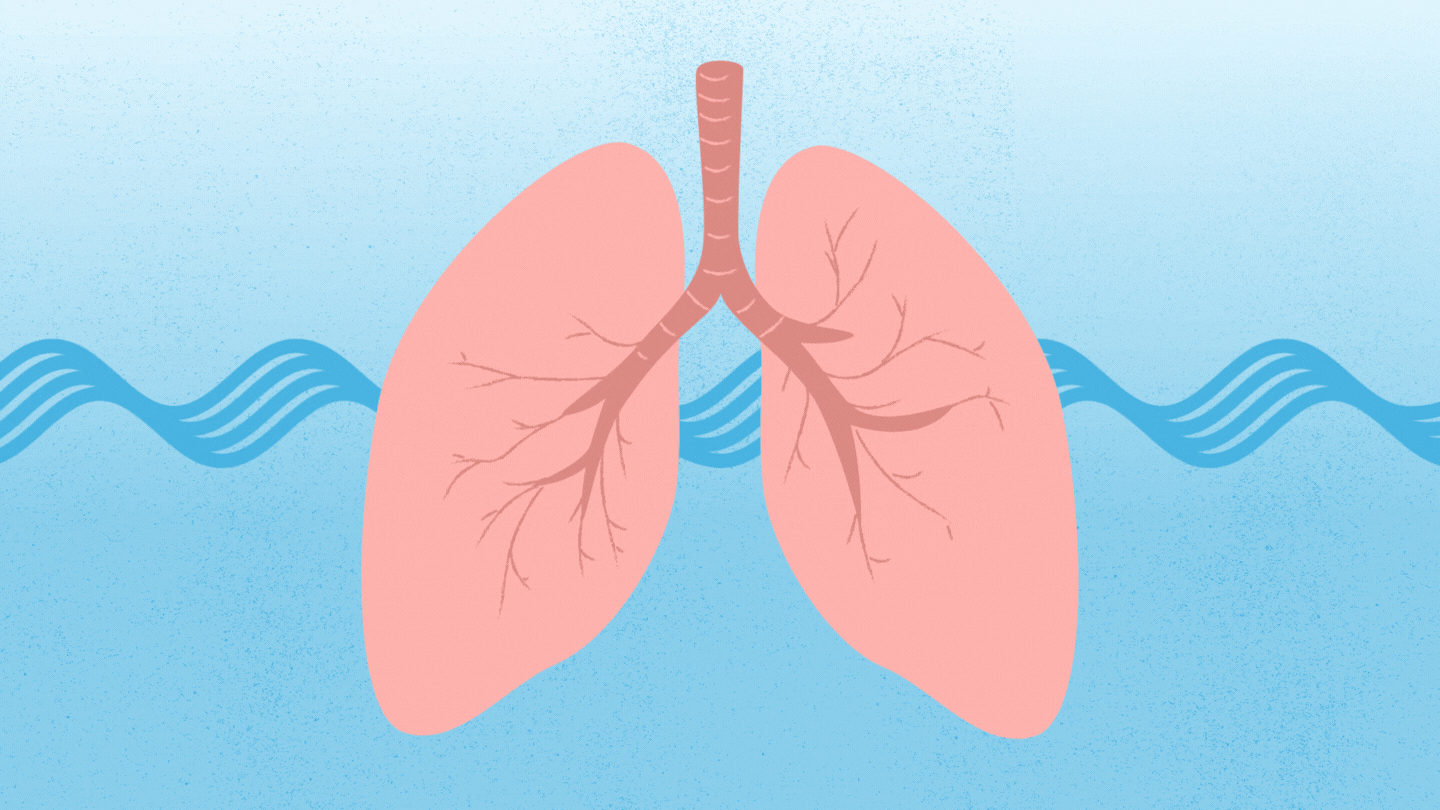The key to managing and staying on top of the many possible symptoms of GVHD is to work closely with your care team, which will likely include a range of specialists. “We take quality of life very seriously and try to do as much as we can to support these patients,” says Dr. Ganguly. “It’s a holistic approach: We look after eye health, oral health, skin health, and mental health, too.”
Working closely with your care team can help your doctors determine if symptoms are due to GVHD itself, treatments for GVHD, or another condition that may have appeared in the meantime.
At home, here’s what you can do to ease symptoms and start feeling better.
- Use a moisturizer or topical steroid on your skin. The symptoms of GVHD tend to appear on the skin first, often as itchiness, rashes, or skin tightness. If you have chronic GVHD, you may also notice your skin starting to harden. “This can be treated through topical management — ointments and creams — and system management like corticosteroids,” says Ganguly.
- Wear sunscreen every day. If you have GVHD, you’re at increased risk of skin cancer due to treatments that can weaken the immune system’s ability to repair or destroy sun-damaged cells.
- Do stretching exercises. If you have stiff, painful joints, try doing some stretching and gentle exercises to improve joint flexibility. Your doctor (or a physical therapist) may recommend doing specific movements, such as hamstring stretches, neck rotations, or shoulder rolls, but always talk to your healthcare provider before trying anything on your own.
- Eat smaller meals, more often. GVHD can cause diarrhea, difficulty absorbing nutrients, or nausea. “Eating small, frequent meals of healthy foods, avoiding spicy or acidic foods, and drinking plenty of water can help manage these symptoms,” says Gandhi. Your doctor may also prescribe medication to reduce gut inflammation.
- Use eye drops. GVHD can attack the glands that produce tears and saliva, leading to dryness. Ask your doctor if you’re a candidate for cyclosporine, natural tear, or serum eye drops. Scleral contact lenses, which are specifically made to treat dry eye, can also help keep eyes moisturized, says Ganguly.
- Pace yourself. Since GVHD can send your immune system into overdrive, you may feel especially fatigued. (Plus, it’s a side effect of using steroids.) To conserve as much energy as possible, try eating healthy foods that provide plenty of energy throughout the day, pacing your activities, and sticking to a regular sleep schedule. If steroids are contributing to your fatigue, your doctor may prescribe steroid-sparing medications that make it possible to keep your steroid dose as low as possible.
- Talk to a therapist. Living with GVHD can be overwhelming, so it’s unsurprising that some people with the condition develop anxiety or depression. “The first thing you need to understand is that you’re not alone,” says Ganguly. Talking to a mental health professional, joining a support group, or practicing stress-relief techniques, such as meditation, can help boost your mental health. You may also want to talk to your doctor or a psychiatrist about prescribing an antidepressant or mood stabilizer.
- Avoid alcohol, and if you smoke, stop. GVHD can damage the liver and lungs, causing jaundice or trouble breathing. Drinking alcohol and smoking can further harm the lungs and liver, as well as hamper the immune system and interfere with the effectiveness of certain medications.
Even if you’re able to successfully manage symptoms on your own, be sure to stay in regular contact with your doctor and keep yourself up to date with checkups. “Regular checkups are important to catch any developing symptoms early,” says Gandhi.
In some cases, your transplant doctor may refer you to a specialist, such as a dermatologist for skin problems, a physical therapist for deeper tissue symptoms, or a dentist for mouth symptoms. Together, your providers can prescribe treatments that can help you keep symptoms in check.
Read the full article here




